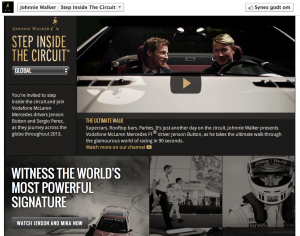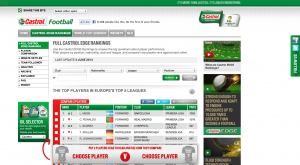When engaging themselves in sports sponsorships, rights holders as well as sponsors should emphasize an optimal integration of ‘brand positioning’ (objective) in the sponsorship solution. The vitality of this process is aligned with what the involved brands want to be associated with, i.e. how the brands would like consumers (and other stakeholders) to perceive them. In other words, this comes down to ‘what the involved parties in the sponsorship agreement want to stand for in the minds of their most important stakeholder groups’ (e.g. consumers).
So how do sports properties and their sponsors succeed in reaching this essential objective? First of all, it is imperative that the parties find a ‘good fit’ between the attributes (e.g. values) of each party. That part is common ‘textbook knowledge’ and to prevent myself from echoing textbook content, I want to stress the competitive advantages linked to a differentiated approach to sponsorship solutions. This stage is (at least for me) the interesting part of the process but also the DIFFICULT part. It entails the creative side of connecting brand positioning and sponsorship through the interactive paths to adding ‘life’ to the solution for consumers. Good and creative brand-sponsorship solutions are capable of offering consumers experiences, which underline the meaning of each party’s brand positioning in creative, exciting and dynamic ways.
Photo: Check out Johnnie Walker’s ‘Step inside’ campaign, see here.
Differentiation often shines through the clutter via the activation of the brand-sponsorship solution. That is where the creative ideas are turned into sponsorship activation aligned with consumer objectives, which will motivate consumers to share the NEWS with their contacts through multi-channel communications. Looking at this process also provides a fine tool to manage the future branding process. This should be understood in relation to the fact that brand equity reveals what each brand currently is associated with while brand positioning displays a future state of mind, i.e. where each brand would like to be in the future.
Photo: Check out Castrol’s ‘CASTROL RANKINGS’ campaign, see here.
I hope that this post can inspire organizations to develop powerful positioning strategies, which are relevant in the way that they solve a problem for stakeholders, both at a functional and and/or emotional level (keep in mind that ‘strong emotional equity’ may be one factor, which differentiates sports branding from other means of branding). I touched the ‘differentiation point’ above but readers should also highlight that THEIR solutions should entail an offer that no competitor can offer. The brand-sponsorship execution and communication should also be credible and motivating so that it emphasizes real and demonstrable benefits and hence creates useful and desired actions from consumers. SO ASK (as a rights holder): ‘who is your customer and who is your customer’s customers?’ This related to the fact that a brand-sponsorship relationship is an interactive partnership where all parties should engage themselves.
Some inspiration:
Johnnie Walker’s Formula 1 engagement (linking the brand with the ‘global’ circus of Formula 1, airports, and duty-free shopping), see videos below:
Castrol’s FIFA World Cup 2010 engagement (linking the brand with the football fans’ interest in ‘high performance’). Castrol wanted to focus on their products’ influence of the performances of engines and thus created the ‘insights into winning performance’ campaign. To activate the sponsorship, Castrol created the ‘Castrol Rankings’, which ranked footballers from Europe’s top give leagues in terms of performance. See videos below:


COMMENTS
No comments yet.